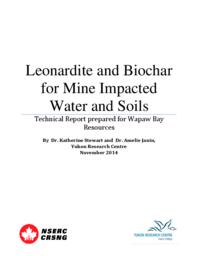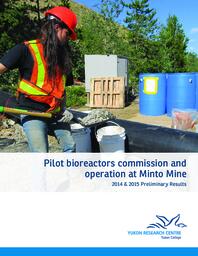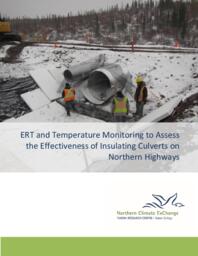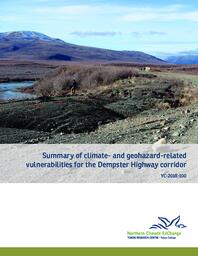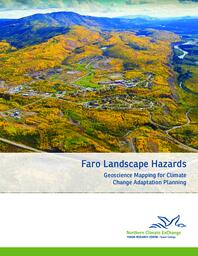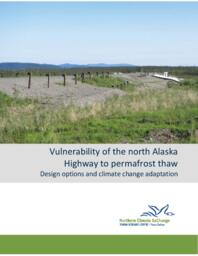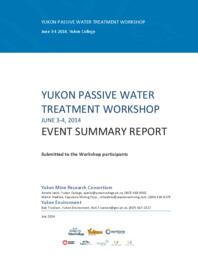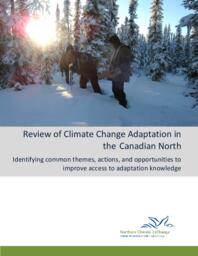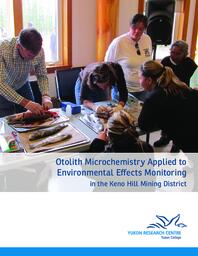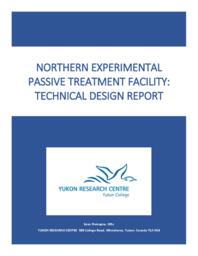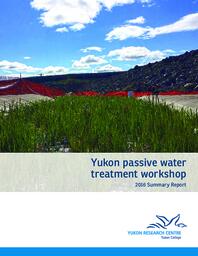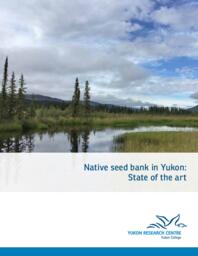Digital Document
The overarching goal of this project was to implement a distributed hydrological modelling system to support hydroelectric production in Yukon under current and changing climate conditions. Building from previous collaboration between YU and YEC,…
Digital Document
In situ immobilization of metals using soil amendment processes is increasingly being considered as an effective and low cost remediation alternative (Mench et al. 2007, Kumpiene et al. 2008, Fellet et al. 2011). Leonardite is a carbon-rich material…
Digital Document
Four (4) pilot anaerobic bioreactors were commissioned at the Minto mine site in the summer of 2014 by Amelie Janin, NSERC Industrial Research Chair at Yukon College, and Capstone staff. Installation was completed on August 7th, 2014 and operation…
Digital Document
Heat transfer into the ground at highway culvert locations can lead to the thawing of permafrost, damaging infrastructure, shortening its lifespan, and increasing maintenance costs. The Dempster Highway in the northern Yukon experiences multiple…
Digital Document
The Dempster Highway is the only road connection to the western Arctic. Now connected with the Inuvik-Tuktoyaktuk Highway, it is part of the infrastructure linking southern Canada with the Arctic Ocean. Extensive reconstruction of the Dempster…
Digital Document
Climate change is a significant challenge for northern communities, where the impacts of a warming climate are already having considerable effects (Huntington and Weller, 2005). Many people living in small, isolated communities in northern Yukon are…
Digital Document
The Alaska Highway between Burwash Landing and the Yukon/Alaska border is underlain by extensive discontinuous, warm and frequently ice-rich permafrost. The disturbance caused by construction of the road and climate warming has already led to the…
Digital Document
The goal of Yukon Passive Water Treatment Workshop was to foster discussions between mines environmental personnel, regulators, project managers, consultants, design engineers, and other affected stakeholders to identify the gaps that need to be…
Digital Document
Throughout northern Canada, a variety of documents speaking to climate change adaptation have been published. These range from peer review articles over presentations, websites, and reports to online tools. This project represents an effort to tie…
Digital Document
The overall goal of this project was to assess, in three stages, the use of fish otolith microchemistry as a potentially new monitoring tool to be applied around Yukon mine sites. High quality environmental assessments are critical to sound land and…
Digital Document
Passive treatment systems offer a low cost and low maintenance means of remediating water contaminated by a variety of industrial and domestic factors. Natural wetlands demonstrate an innate ability to remove contaminants derived from mining/…
Digital Document
As passive water treatment technologies are increasingly being considered as a part of mine site closure in Yukon, it is important for industry to share with the government the questions they have, and vice versa. Efforts are currently underway by…
Digital Document
The Northern Mine Remediation project began with the formation of the Yukon Mining Research Committee (YMRC) in 2012. As representatives of the mining industry they wanted to create a platform for industry, Yukon College, First Nations, and…
Digital Document
The revegetation needs in the Yukon are projected to grow in the next few years as new mining projects go through the environmental assessment process, and plans for the revegetation of large-scale abandoned mines begin to take shape. Revegetation…
Digital Document


